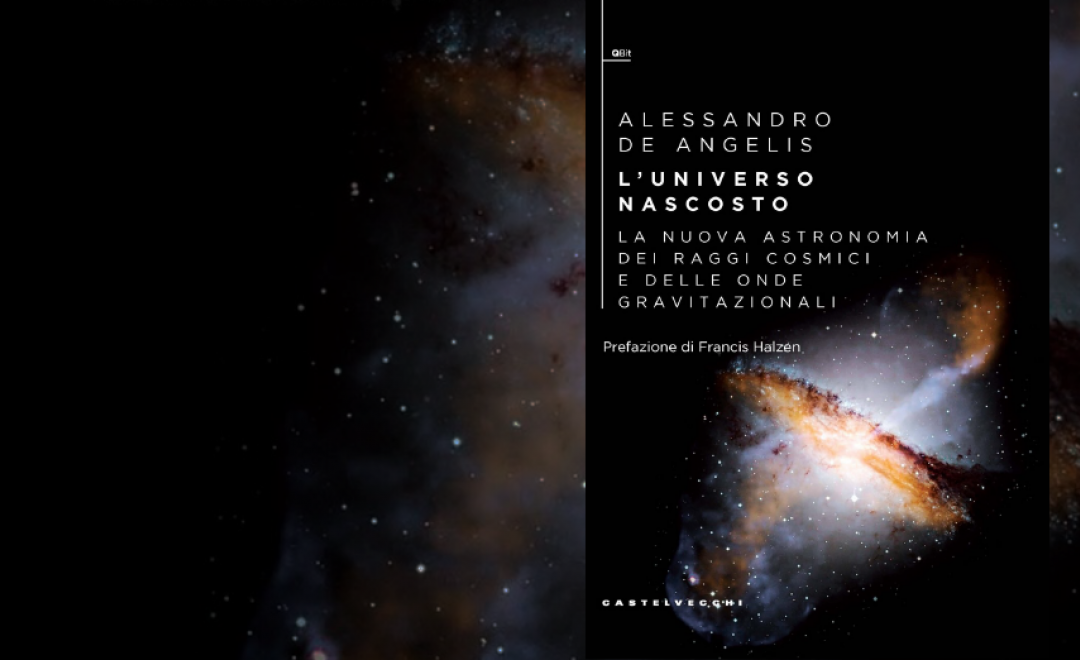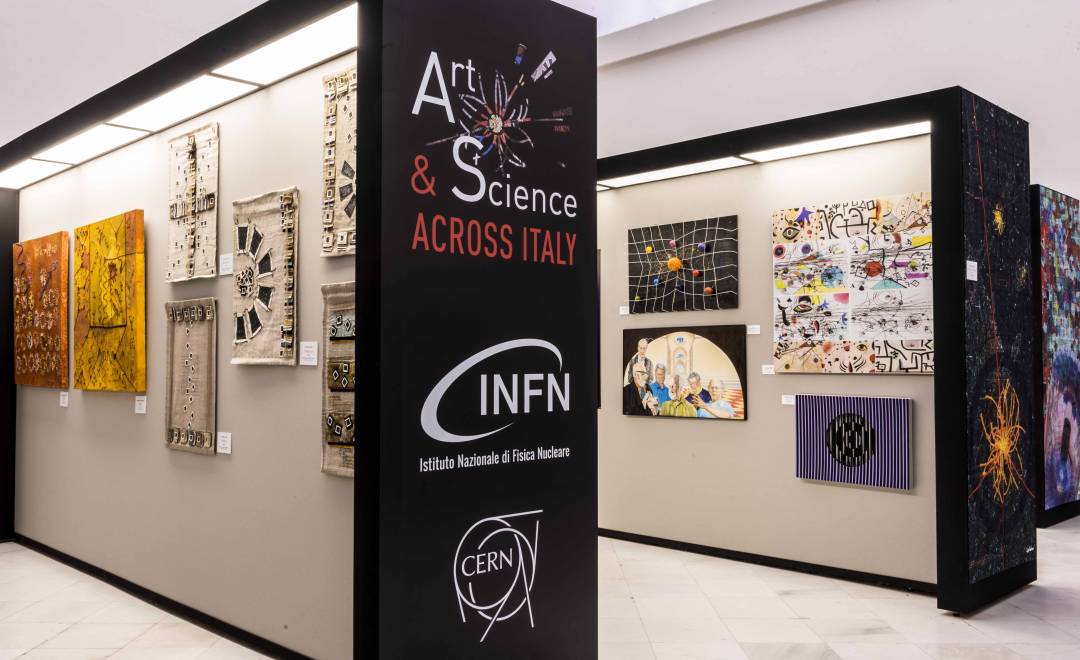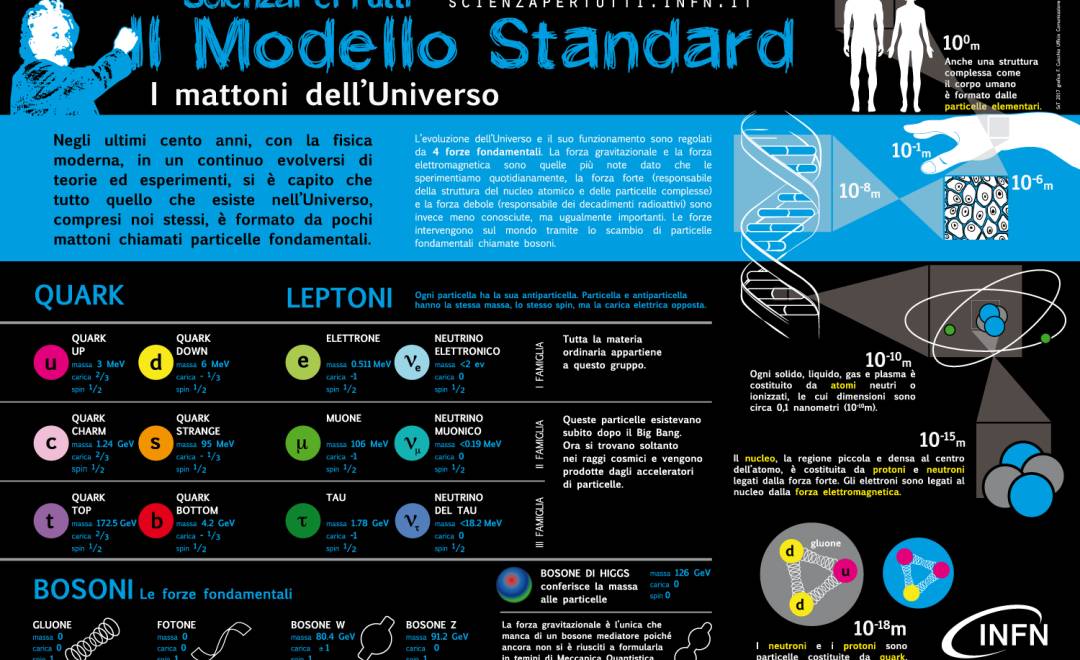
Biografia estratta da Nobel Lectures, Physics 1901-1921.
![]() 1921 Premio Nobel per la Fisica
1921 Premio Nobel per la Fisica
(1879-1955) Albert Einstein was born at Ulm, in Württemberg, Germany, on March 14, 1879. Six weeks later the family moved to Munich and he began his schooling there at the Luitpold Gymnasium. Later, they moved to Italy and Albert continued his education at Aarau, Switzerland and in 1896 he entered the Swiss Federal Polytechnic School in Zurich to be trained as a teacher in physics and mathematics. In 1901, the year he gained his diploma, he acquired Swiss citizenship and, as he was unable to find a teaching post, he accepted a position as technical assistant in the Swiss Patent Office. In 1905 he obtained his doctor's degree. During his stay at the Patent Office, and in his spare time, he produced much of his remarkable work and in 1908 he was appointed Privatdozent in Berne. In 1909 he became Professor Extraordinary at Zurich, in 1911 Professor of Theoretical Physics at Prague, returning to Zurich in the following year to fill a similar post. In 1914 he was appointed Director of the Kaiser Wilhelm Physical Institute and Professor in the University of Berlin. He became a German citizen in 1914 and remained in Berlin until 1933 when he renounced his citizenship for political reasons and emigrated to America to take the position of Professor of Theoretical Physics at Princeton*.
He became a United States citizen in 1940 and retired from his post in 1945. After World War II, Einstein was a leading figure in the World Government Movement, he was offered the Presidency of the State of Israel, which he declined, and he collaborated with Dr. Chaim Weizmann in establishing the Hebrew University of Jerusalem. Einstein always appeared to have a clear view of the problems of physics and the determination to solve them. He had a strategy of his own and was able to visualize the main stages on the way to his goal. He regarded his major achievements as mere stepping-stones for the next advance.
At the start of his scientific work, Einstein realized the inadequacies of Newtonian mechanics and his special theory of relativity stemmed from an attempt to reconcile the laws of mechanics with the laws of the electromagnetic field. He dealt with classical problems of statistical mechanics and problems in which they were merged with quantum theory: this led to an explanation of the Brownian movement of molecules. He investigated the thermal properties of light with a low radiation density and his observations laid the foundation of the photon theory of light. In his early days in Berlin, Einstein postulated that the correct interpretation of the special theory of relativity must also furnish a theory of gravitation and in 1916 he published his paper on the general theory of relativity.
During this time he also contributed to the problems of the theory of radiation and statistical mechanics. In the 1920's, Einstein embarked on the construction of unified field theories, although he continued to work on the probabilistic interpretation of quantum theory, and he persevered with this work in America. He contributed to statistical mechanics by his development of the quantum theory of a monatomic gas and he has also accomplished valuable work in connection with atomic transition probabilities and relativistic cosmology.
After his retirement he continued to work towards the unification of the basic concepts of physics, taking the opposite approach, geometrisation, to the majority of physicists. Einstein's researches are, of course, well chronicled and his more important works include Special Theory of Relativity (1905), Relativity (English translations, 1920 and 1950), General Theory of Relativity (1916), Investigations on Theory of Brownian Movement (1926), and The Evolution of Physics (1938). Among his non-scientific works, About Zionism (1930), Why War? (1933), My Philosophy (1934), and Out of My Later Years (1950) are perhaps the most important. Albert Einstein received honorary doctorate degrees in science, medicine and philosophy from many European and American universities.
During the 1920's he lectured in Europe, America and the Far East and he was awarded Fellowships or Memberships of all the leading scientific academies throughout the world. He gained numerous awards in recognition of his work, including the Copley Medal of the Royal Society of London in 1925, and the Franklin Medal of the Franklin Institute in 1935. Einstein's gifts inevitably resulted in his dwelling much in intellectual solitude and, for relaxation, music played an important part in his life. He married Mileva Maritsch in 1901 and they had two sons; their marriage was dissolved and in 1917 he married his cousin, Elsa Einstein, who died in 1936. He died on April 18, 1955 at Princeton, New Jersey.
* Albert Einstein was formally associated with the Institute for Advanced Study located in Princeton, New Jersey.
Traduzione di Piero Patteri
(1879-1955) Albert Einstein nacque a Ulm, in Germania, nella regione del Württemberg, il 14 marzo 1879. Sei settimane più tardi la sua famiglia si trasferì a Monaco, dove cominciò la sua istruzione al Luitpold Gymnasium.Successivamente si trasferirono in Italia, mentre Albert proseguiva la sua formazione a Aarau (CH) , entrando successivamente nel Politecnico Federale Svizzero di Zurigo per prepararsi a una carriera di insegnante di matematica e fisica.Nel 1901 si diplomò e nello stesso anno ottene la cittadinanza svizzera. Non essendo riuscito a trovare lavoro come insegnante, accettò un posto come assistente tecnico all' Ufficio Brevetti Svizzero. Nel 1905 si laureò.
Mentre era all' Ufficio Brevetti, e durante il suo tempo libero, produsse molti dei suoi più eminenti lavori, e nel 1908 fu nominato Privatdozent a Berna. Nel 1909 divenne Professore Straordinario a Zurigo, nel 1911 Professore di Fisica Teorica a Praga, tornando l' anno dopo a Zurigo per coprire una posizione accademica equivalente. Nel 1914 fu nominato Direttore del Kaiser Wilhelm Physical Institute eProfessore nell' Università di Berlino. Nel 1914 divenne cittadino tedesco e rimase a Berlino fino al 1933, quando rinunciò alla cittadinanza per motivi politici ed emigrò in America per prendere il posto di Professore di Fisica Teorica a Princeton.
Prese la cittadinanza americana nel 1940, e nel 1945 lasciò gli incarichi accademici a Princeton. Dopo la seconda guerra mondiale Einstein, accanto a Winston Churchill, Bertrand Russel e Mahatma Gandhi, fu una figura guida del Movimento per un Governo Mondiale, che riteneva che l' Organizzazione delle Nazioni Unite (ONU) fosse troppo condizionabile dalla sovranità dei singoli stati partecipanti, e invocava ulteriori passi verso la formazione di un vero governo mondiale federale.
Collaborò con Chaim Weizmann , primo presidente dello stato di Israele, per l' istituzione della Hebrew University di Gerusalemme;. Nel 1952, dopo la morte di Weizmann, gli fu offerta la presidenza di Israele, ma rifiutò la proposta.
Einstein sembrava avere sempre una chiara visione dei problemi della fisica e la determinazione a risolverli. Aveva un approcco ai problemi tutto personale, ed era capace di visualizzare le diverse tappe sulla strada che portava all' obbiettivo. Considerava i suoi maggiori risultati come delle pietre in un guado, per passare oltre una situazione difficile, e giungere a un ulteriore progresso.
All' inizio del suo lavoro scientifico, Einstein comprese l' inadeguatezza della meccanica newtoniana e la sua Teoria della Relatività Speciale fu il frutto dello sforzo di riconciliare le leggi della meccanica con le leggi dell' elettromagnetismo. Affrontò sia problemi classici di meccanica statistica sia problemi in cui questa sfociava nella teoria quantistica. Questo lo portò a una spiegazione del moto browniano delle molecole, e contemporaneamente, investigando le proprietà della luce a bassi livell di densità di radiazione, alla concezione della natura corpuscolare dei fotoni della luce.
Nel primo periodo a Berlino, Einstein ipotizzò che la corretta interpretazione della Teoria della Relatività Ristretta dovesse anche produrre una teoria coerente della gravitazion, e nel 1916 pubblicò il suo lavoro sulla Teoria della Reletività Generale, applicandola poi allo sviluppo di modelli cosmologici.
Negli anni immediatamente successivi, durante i quali si verificò lo straordinario sviluppo della meccanica quantistica, Einstein diede contributi fondamentali nel campo della teoria della radiazione (calcolo della probabilita dell' emissione spontanea e stimolata) e della meccanica statistica quantistica (statistica di Bose-Einstein, o statistica dei bosoni).
A partire dal decennio successivo, intraprese il tentativo di costruire una Teoria dei Campi Unificata, a cui continuò a dedicarsi per tutto il resto della sua vita, pur continuando a lavorare sull' interpretazione probabilistica della teoria quantistica
































